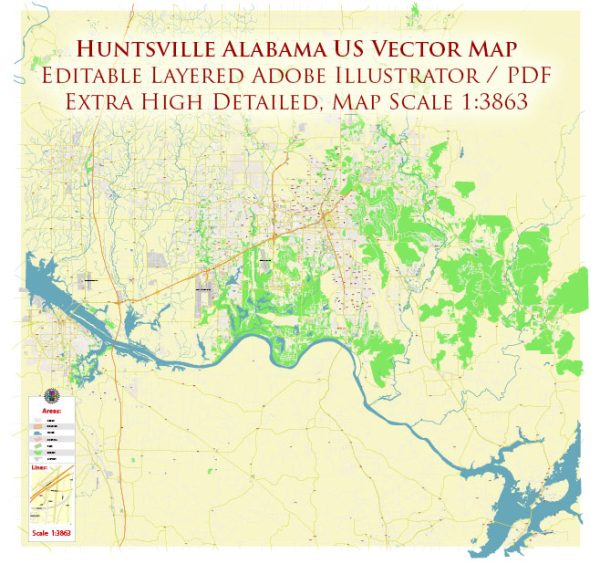Huntsville, Alabama, has a rich history of urban development that reflects the city’s growth from a small frontier town to a thriving urban center with a strong emphasis on technology and aerospace. Here is a brief overview of Huntsville’s urban development history:
- Early Settlement and Incorporation (19th Century):
- Huntsville was founded in 1805 by John Hunt, an early settler, and was initially established as a center for trade and agriculture.
- The town’s growth was spurred by its strategic location and the influence of leaders like John Hunt, Leroy Pope, and others.
- In 1811, Huntsville was incorporated as a town, and by the mid-1800s, it had become a prosperous cotton and textile center.
- Civil War and Post-War Era:
- During the Civil War, Huntsville played a significant role as a Confederate supply depot and hospital center. The city also saw occupation by Union forces.
- After the war, the city faced economic challenges, but reconstruction efforts and the introduction of new industries, such as textile mills and iron manufacturing, contributed to its recovery.
- Industrialization and the Space Age (20th Century):
- The 20th century marked a transformative period for Huntsville with the arrival of the Redstone Arsenal and NASA’s Marshall Space Flight Center in the 1950s.
- The establishment of these major government facilities brought an influx of scientists, engineers, and their families, significantly impacting the city’s demographic and economic landscape.
- Huntsville became a key player in the space race, contributing to the development of the Saturn V rocket that took astronauts to the moon.
- The city’s population and economy grew substantially during this period, and the technological advancements spurred by the aerospace industry had a lasting impact on Huntsville’s identity.
- Diversification and Technology Hub (Late 20th Century – Present):
- In the latter part of the 20th century and continuing into the 21st century, Huntsville diversified its economy beyond aerospace and defense.
- The city has become a hub for technology and research, attracting industries such as biotechnology, telecommunications, and software development.
- The Cummings Research Park, one of the largest research parks in the United States, has played a pivotal role in fostering innovation and collaboration among businesses, government agencies, and educational institutions.
- Infrastructure and Urban Planning:
- The city has invested in infrastructure projects and urban planning to accommodate its growing population and evolving economic base.
- Huntsville has experienced suburbanization, with residential and commercial development expanding beyond the city center.
- Ongoing efforts include revitalization projects, green initiatives, and transportation improvements to enhance the overall quality of life for residents.
- Cultural and Educational Development:
- Huntsville’s urban development has been complemented by a focus on cultural and educational institutions. The city is home to museums, theaters, and educational facilities that contribute to its vibrant community.
Huntsville’s history of urban development is closely tied to its role in technology and space exploration, shaping its trajectory from a small agricultural town to a dynamic and innovative city.


 Author: Kirill Shrayber, Ph.D.
Author: Kirill Shrayber, Ph.D.